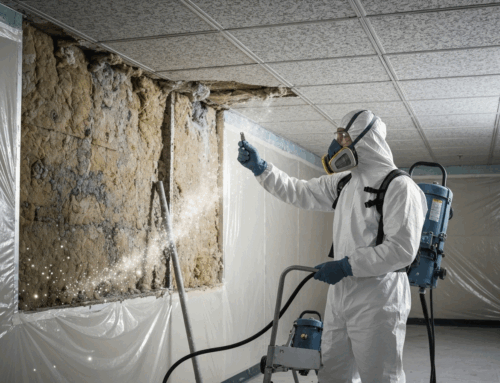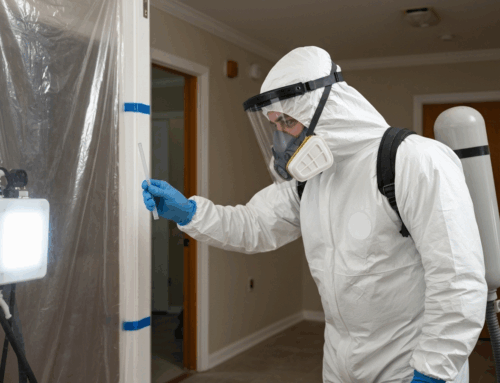Understanding South Carolina’s Environmental Protection Framework
South Carolina’s commitment to environmental health and safety is anchored by its dedicated regulatory body, the South Carolina Department of Environmental Services (SCDES). This agency plays a pivotal role in safeguarding the state’s natural resources and public well-being by establishing and enforcing environmental regulations. For homeowners, property managers, contractors, and businesses across the state, understanding the framework within which SCDES operates is crucial, especially when dealing with hazardous materials.
The SCDES, as the state’s primary environmental protection agency, is tasked with a broad mandate that includes managing waste, protecting water and air quality, and overseeing hazardous substances. This comprehensive approach ensures that environmental concerns are addressed systematically, from prevention to remediation. A significant part of the agency’s work involves regulating hazardous materials like asbestos and lead, which are frequently encountered in renovation and demolition projects throughout South Carolina.
Key Programs for Hazardous Waste Management in SC
The SCDES implements various programs designed to manage hazardous waste effectively across South Carolina. These programs are not just about reactive cleanup; they encompass a proactive stance on prevention, proper handling, and safe disposal. The core of these efforts often aligns with federal guidelines, such as the Resource Conservation and Recovery Act (RCRA), while also tailoring regulations to meet specific state needs and challenges.
Key areas of focus for the SCDES include:
- Hazardous Waste Permitting: Facilities that generate, transport, treat, store, or dispose of hazardous waste must obtain permits from the SCDES, ensuring their operations meet stringent safety and environmental standards.
- Compliance Monitoring: Regular inspections and monitoring are conducted to ensure businesses and individuals adhere to all applicable hazardous waste regulations, minimizing the risk of improper disposal or accidental releases.
- Technical Assistance: The SCDES provides guidance and support to businesses to help them understand and comply with complex hazardous waste rules, fostering a cooperative approach to environmental protection.
- Site Assessment and Remediation: When contamination occurs, the SCDES oversees investigations to determine the extent of the problem and mandates appropriate cleanup actions, ensuring sites are returned to a safe condition.
These programs collectively contribute to the overall SCDES impact on SC hazardous removal, creating a safer environment for all residents.
The SCDES Impact on SC Hazardous Removal through Site Cleanup and Remediation
The most direct way the SCDES impacts SC hazardous removal is through its oversight of site cleanup and remediation activities. When hazardous substances contaminate land or water, whether from industrial accidents, past disposal practices, or natural disasters, the SCDES steps in to ensure proper corrective actions are taken. This often involves intricate processes that require specialized knowledge and equipment.
The remediation process typically involves:
- Investigation: Assessing the type and extent of contamination.
- Planning: Developing a comprehensive plan for cleanup that meets regulatory requirements.
- Execution: Overseeing the actual removal and treatment of hazardous materials.
- Monitoring: Ensuring the effectiveness of the cleanup and long-term site stability.
The goal is to mitigate risks to human health and the environment, restoring affected areas to safe and productive uses. This commitment to thorough site cleanup underscores the significant SCDES impact on SC hazardous removal, making communities healthier and safer. For instance, the South Carolina Hazardous Waste Management Act outlines the legal framework that empowers the SCDES in these critical operations.
Preventative Measures and Accidental Release Preparedness
Beyond cleanup, the SCDES places a strong emphasis on preventing hazardous material incidents from occurring in the first place. This includes developing and enforcing regulations that require businesses to implement robust accidental release prevention programs. For instance, facilities that handle certain hazardous chemicals are mandated to develop Risk Management Plans (RMPs), which detail potential hazards, prevention measures, and emergency response procedures.
Key preventative strategies and preparedness initiatives include:
- Regulatory Framework: Establishing strict rules for the storage, handling, and transportation of hazardous substances.
- Permitting Requirements: Requiring permits for operations involving hazardous materials, which often include a review of safety protocols.
- Emergency Response Planning: Collaborating with emergency services to ensure coordinated responses to chemical spills or other hazardous incidents.
- Public Information: Providing information to the public about potential hazards in their communities and how to respond in an emergency.
These proactive measures are vital for minimizing risks and protecting both the environment and public safety from unforeseen hazardous events. The SCDES’s dedication to preparedness reinforces its role in mitigating the dangers associated with hazardous substances.
Community Engagement and Public Safety in Hazardous Waste Operations
The SCDES recognizes that effective hazardous waste management and removal require not only regulatory oversight but also active community engagement. Transparency and public participation are key components of their approach, ensuring that residents are informed about hazardous waste activities in their areas and have opportunities to voice concerns.
Aspects of community engagement include:
- Public Notices: Informing the public about proposed permits, cleanup plans, and other significant actions related to hazardous waste.
- Public Meetings: Hosting meetings to explain complex environmental issues and gather public input.
- Accessibility of Information: Making environmental data and reports readily available to the public.
- Responding to Concerns: Addressing community inquiries and complaints regarding environmental quality and hazardous materials.
By fostering an informed and engaged citizenry, the SCDES helps build trust and ensures that hazardous waste operations are conducted with the highest regard for public safety and environmental justice. This emphasis on public welfare is central to the overall SCDES impact on SC hazardous removal.
Evaluating Efficiency and Future Directions in Hazardous Material Oversight
The landscape of hazardous waste management is constantly evolving, with new challenges emerging and technologies advancing. The SCDES continuously evaluates the efficiency of its hazardous removal programs and adapts its strategies to address future needs. This involves reviewing existing regulations, incorporating new scientific understanding, and fostering innovation in waste management and remediation techniques.
Future directions for hazardous material oversight in South Carolina may include:
- Emerging Contaminants: Developing strategies to address newly identified hazardous substances, such as PFAS (per- and polyfluoroalkyl substances).
- Technological Integration: Utilizing advanced monitoring technologies and data analytics to improve detection, tracking, and management of hazardous waste.
- Climate Change Adaptation: Considering the impacts of climate change, such as increased frequency of severe weather events, on hazardous waste sites and developing resilient management plans.
- Partnerships: Strengthening collaborations with federal agencies, local governments, industry, and environmental organizations to enhance hazardous waste management efforts.
The ongoing commitment to improvement and adaptability ensures that the SCDES remains effective in its vital role of protecting South Carolina from hazardous materials. For more technical details on state program authorizations, you can consult resources like the Federal Register regarding South Carolina’s hazardous waste program revisions.
Have questions? Contact us here.






